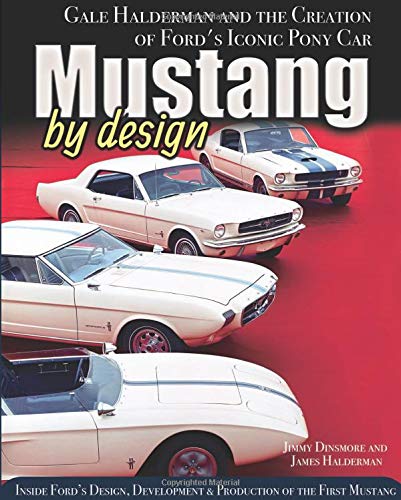
Without question, the 1964-1/2 Mustang is one of the most important and influential cars in automotive history. When Ford launched the Mustang, it created an automotive revolution. Award-winning designer and stylist Gale Halderman was at the epicenter of the action at Ford, and, in fact, his initial design sketch formed the basis of the new Mustang. He reveals his involvement in the project as well as telling the entire story of the design and development of the Mustang.
Authors and Mustang enthusiasts James Dinsmore and James Halderman go beyond the front doors at Ford into the design center, testing grounds, and Ford facilities to get the real, unvarnished story. Gale Halderman offers a unique behind-the-scenes perspective and firsthand account of the inception, design, development, and production of the original Mustang. With stinging losses from the Edsel fresh in minds at Ford, the Mustang project was an uphill battle from day one. Lee Iacocca and his assembled team had a herculean task to convince Henry Ford II to take a risk on a new concept of automobile, but with the help of Hal Sperlich’s detailed market research, the project received the green light. Henry Ford II made it clear that jobs were on the line, including Iacocca’s, if it failed.
The process of taking a car from sketch to clay model to prototype to preproduction and finally finished model is retraced in insightful detail. During the process, many fascinating experimental cars, such as the Mustang I two-seater, Mustang II prototype, Mustang Allegro, and Shorty, were built. But eventually the Mustang, based on the existing Ford Falcon, received the nod for final production. In a gala event, it was unveiled at the 1964 World’s Fair in New York. The Mustang received public accolades and critical acclaim, and soon it became a runaway hit. After the initial success, Ford designers and Gale Halderman designed and developed the first fastback Mustangs to compliment the coupes. The classic Mustang muscle cars to follow, including the GT, Mach 1, and others, are profiled as well.
The Mustang changed automotive history and ushered in the pony car era as a nimble, powerful, and elegantly styled sports coupe. But it could so easily have stumbled and wound up on the scrap pile of failed new projects. This is the remarkable and dramatic story of how the Mustang came to life, the demanding design and development process, and, ultimately, the triumph of the iconic American car.

Skinner’s Union – A history of the Skinner family and the S.U Company is a comprehensive history of the S.U. Company and the members of the Skinner family involved. This new book by Mike Harvey comprises over 300 pages with copious photographs, drawings and illustrations (many not previously published).
The book’s main focus is on the period from 1908 when the leather bellows carburetter,designed by George Herbert Skinner, was first put into production by his younger brother Thomas Carlyle Skinner (whilst originally a partner in the firm of George Wailes & Co), through to Carl Skinner’s retirement in 1947, by which time the S.U. Carburetter Company Ltd was part of the vast Nuffield Organisation.
Two chapters cover Barbara and Peter Skinner’s hill climbing and racing activities and give details of the Skinner Specials. Another chapter covers the period leading up to and during WW2, when SU manufactured the aero-carburetters and single point injection systems for many RAF aircraft. During the Battle of Britain in 1940, the Rolls-Royce Merlin engine in every Spitfire and Hurricane had an SU Carburetter. Two Appendices cover the the history of the company from the 1950’s to the present day and list the main S.U products from the first prototype carburetter of 1904 through to 1994 when the original company ceased manufacturing the KIF carburetters for the Rover Metro. A further Appendix lists details of the original patents and drawings.
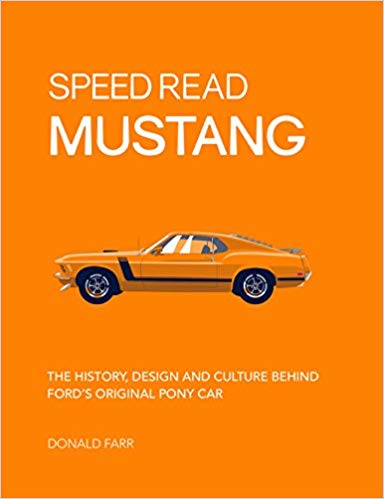
The world’s premier pony car is in the spotlight this time in Motorbooks’ Speed Read series.
Get a full look at every iconic Mustang model, from the first car to bear the name in 1964 that became the fastest selling car of all time, to the astounding 526-horsepower supercar Mustang produces today.
Part of Motorbooks’ Speed Read series, Mustang:The History, Technology and Design Behind the Original Pony Car covers 50 aspects key to understanding the Mustang’s amazing history. With accessible language, compartmentalized sections, and specially commissioned artwork, readers will learn about Mustang’s history in racing, production cars, design and technology, and the personal histories of key figures. It will make anyone an instant Mustang expert!
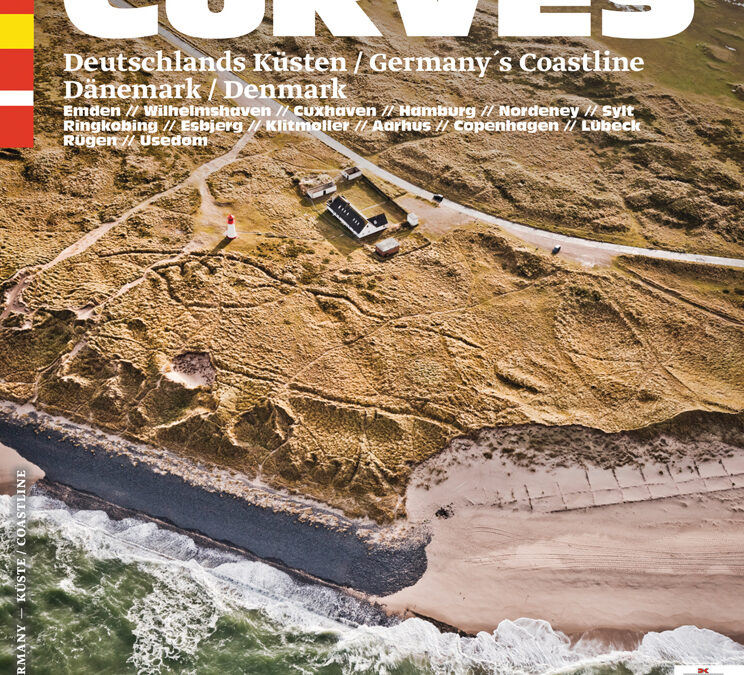
You do not need to go to California for scenic coastal roads or relaxed cruising – not when you have that right on your doorstep in Europe. Instead of chewing gum, eating burgers and drinking Coca-Cola, your travelling companions will experience liquorice, tea and shrimp rolls – and, of course, Porsche.
In the latest Curves volume, Stefan Bogner travels the German coastline from von Emden to Hamburg, visits the North Frisian island Sylt, and takes a trip to Denmark. From Klitmoeller he goes to Copenhagen and Lübeck. The journey comes to an end in between seaside resorts and chalk cliffs on Rügen, an island in the Baltic.
Text in English and German.
20908

Come along for a drive into the life of Danny McKeever, who for over 40 years has been one of America’s top driving instructors. Founder of Fast Lane Driving School in Southern California, Danny McKeever was chief instructor for the Toyota Pro/Celebrity Grand Prix at Long Beach from 1985 until the race’s last installment in 2016. Jam-packed with pro driving tips, tongue-in-cheek humor, and inside stories featuring some of the biggest names in Hollywood, the tale of Danny McKeever’s life in the fast lane is not just a resource for how to improve your own driving skills; it’s a story about what it takes to lead the pack, on the track and in everyday life.
With personal contributions from celebrities Adam Carolla, Rutledge Wood, Stephen Baldwin, Brian Austin Green, Dara Torres, Perry King, and Lorenzo Lamas.
A portion of proceeds from every book sold goes to the Page Jones Brain Injury Foundation

Although one of the Luftwaffe’s lesser-known front line aircraft, the Dornier Do 215, descended from the Dornier Do 17, saw service in a wide range of roles, including night fighter, reconnaissance and staff transport. In doing so it demonstrated remarkable flexibility for both the Luftwaffe and several foreign operators between 1939 and1944.
This new book describes the Do 215’s operations with the Luftwaffe’s secretive Aufkl rungsgruppe Ob.d.L., both in wartime operations in the West and in civil disguise in preparation for Operation Barbarossa in 1941 and during the invasion itself. It describes its lineage from the dedicated reconnaissance aircraft Do 17R, as well as the development of the Do 17 Z-7/Z-10 which preceded the Do 215 B-5 nightfighter, one of the first aircraft to employ radar and infrared sighting equipment. The Do 215 was also the chosen aircraft of several leading Luftwaffe commanders, including Josef Kammhuber, Albert Kesselring and Erhard Milch.
Following many years of extensive research the author describes the covert reconnaissance, night-fighter and staff transport service of the Do 215 and how the type was affected by the protracted development of the Dornier’s DB 600 and DB 601 powerplants. He also uncovers details of the export efforts made by Nazi Germany with Yugoslavia, Romania, Sweden, The Netherlands, the Soviet Union and other nations, as well as the late war Hungarian operation of the Do 215.
With hundreds of rare photographs, specially commissioned color artwork, technical and performance data, details on camouflage and markings, production and loss lists, Mikael Olrog presents a fascinating and revealing account of the often overlooked and misunderstood Dornier Do 215.
10820

Dodge Challenger & Plymouth Barracuda is the ultimate resource on the definitive Chrysler pony car. Written by Peter Grist, his approach able and unpretentious style accentuates the highlights of these great vehicles.
This title profiles every series and model of pony car made by the Chrysler Corporation through the 60s and ’70s, including the slippery Barracuda and classic Dodge Challenger, along with stars of the big screen and drag strip.

In the early 1960s, Lee Iacocca–then director of the Ford division at Ford Motor Company–convinced Henry Ford II to produce a sporty four-seat car aimed at the emerging youth market. That car, essentially a reconfigured and re-skinned Falcon economy car, became the Ford Mustang, and it changed the automotive world like no other car before or since.
In Ford Mustang: America’s Original Pony Car, acclaimed Mustang writer Donald Farr celebrates this unbroken lineage of muscle. He chronicles the car’s phenomenal first-year sales, the new pony car category it pioneered, and subsequent models that include the Mustang GT, Shelby GT350, Shelby GT500, Super Cobra Jet, Boss 302, and Boss 429 – all part of a line of American performance cars that continues to this day.
Created in cooperation with Ford Motor Company and featuring some 400 photos from its historic and media archives, Ford Mustang is a must on the bookshelf of any muscle car or Ford aficionado
20099

Chronicled here for the first time, Harley-Davidson’s CVO motorcycles are pure eye candy.
The pinnacle of Harley-Davidson customization–that’s exactly what the Motor Company’s Custom Vehicle Operations(R) motorcycles are: custom-shop details that push the boundaries of style and performance with high-impact paint, killer wheels, big engines, and exclusive technology. Designed in-house since 1999 at Harley-Davidson’s world-class Willie G Product Development Center, built by the factory, and available through Harley-Davidson’s dealer network, these machines set themselves apart from the pack. Harley-Davidson(R) CVO(tm) Motorcycles: the Motor Company’s Custom Vehicle Operations is the first book to showcase these works of two-wheeled art and the story behind them.
Produced in limited numbers, and always in high demand, CVO(tm) motorcycles are defined by the riders committed to riding the best. Whether you have one of these high-performance motorcycles in your garage or have one in your sightline, Harley-Davidson(R) CVO(tm) Motorcycles provides a close look into the Motor Company’s ultimate custom motorcycles

Over the years, American automobile racing has enjoyed a handful of successful racing families such as the Andrettis and Unsers in Indy car racing and the Pettys, Allisons and Earnhardts in NASCAR. We’ve also seen this phenomenon in Europe and international racing, with the likes of Graham Hill and his son Damon, world champions both, and the legendary Ferrari Formula One hero Gilles Villeneuve and his son Jacques, who was successful in both Indy and F1 cars.
Less well-known with the passage of time, but equally accomplished in a wide-range of American open wheel racing are the Bettenhausens, Tony and his three sons, Gary, Merle and Tony, Jr. The family’s story has been told before by Carl Hungness in his epic GO! The Bettenhausen Story, published in 1982. But more than thirty years later, with advice and assistance from Merle and Susan Bettenhausen we decided to take a fresh, pictorial look at the family’s story using Racemaker Press’s superb photo archive along with the Bettenhausen family’s personal collections.
Award-winning author Gordon Kirby has created a visual odyssey of the Bettenhausen family’s epic story, starting with two-time Indy car champion Tony Senior’s first laps at the wheel of a mid-western midget in 1938, and following Gary’s, Merle’s and Tony Jr.’s careers. This book features over 350 superb photos and is enlivened by Merle and Susan Bettenhausen’s personal recollections, observations and commentary about their father, brothers and family. The book is completed with full statistical data of the Bettenhausens’ championship racing careers
19505
19465

Whenever the airship flew over a village, or whenever she flew over a lonely field on which some peasants were working, a tremendous shout of joy rose up in the air towards Count Zeppelin’s miracle ship which, in the imagination of all who saw her, suggested some supernatural creature. As this paean to the Zeppelin from an early-20th-century issue of the German newspaper Thüringer Zeitung makes clear, the airship inspired a unique sense of awe. These phenomenal rigid, lighter-than-air craft―the invention of Ferdinand Graf von Zeppelin (1838-1917)―approached the size of a small village. Although they moved slowly, there was no mistaking their exciting―or ominous―potential. Friends of the machine believed that it would revolutionize commerce, carry scientists to otherwise inaccessible places, and deliver bombs with great accuracy. Before the airplane proved its reliability and superior practicality―and before the fiery crash of the Hindenburg in 1937―Zeppelins made a deep impression on the minds of Europeans, especially in Germany.
In Zeppelin! Guillaume de Syon offers a captivating history of this technological wonder, from development and production to its impact on German culture and society. De Syon chronicles the various ways in which the airships were used―transport, war, exploration, and propaganda―and details the attempts by successive German governments―autocratic, democratic, fascist― to co-opt Count Zeppelin’s invention. Between 1900 and 1939, Germans saw the Zeppelin as a symbol of national progress, and de Syon uses the airship to better understand the dynamics of German society and the place of technology within it. Though few people actually flew in any of the 119 Zeppelins built, the rigid airship made one of the strongest impressions of any flying machine on Europe’s collective memory. Six decades later, there is still a mystique surrounding these technological leviathans, one that Zeppelin! addresses with insight and wit.

In this, the first Haynes Manual about a Second World War warship, acclaimed maritime author and historian Angus Konstam gives readers a detailed insight into the design, fighting capability and short-lived career of Nazi Germany’s greatest warship. He tells the Bismarck’s story, from her origins in the aftermath of the Great War and the Versailles Treaty, including Germany’s capital ship building program, her design, building, launch and fitting out, to her sea trials and eventual commissioning into the Kriegsmarine.
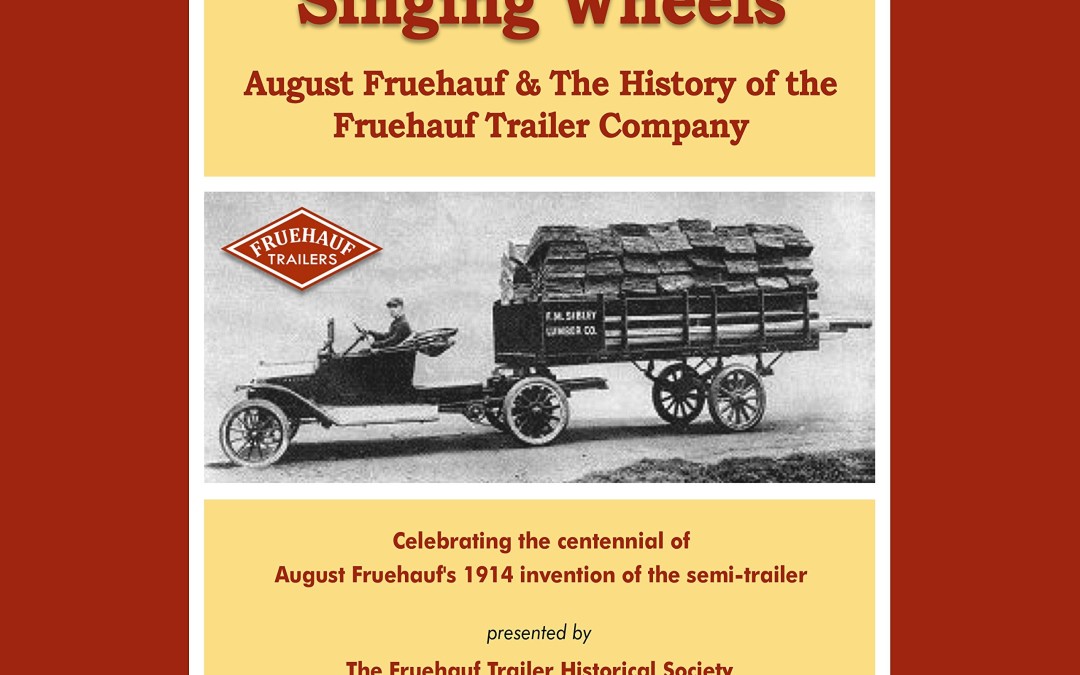
The Fruehauf Trailer Historical Society celebrates August Fruehauf’s creation of the first Semi-Trailer in 1914. August went from being a hard working german immigrant in Detroit to the President of a million dollar national company at his death in 1939. To commemorate the centennial in 2014, we present a biographical essay on August Fruehauf and the history of the company he created. It includes 39 pages of history and 90 pages of photographs from our archives.
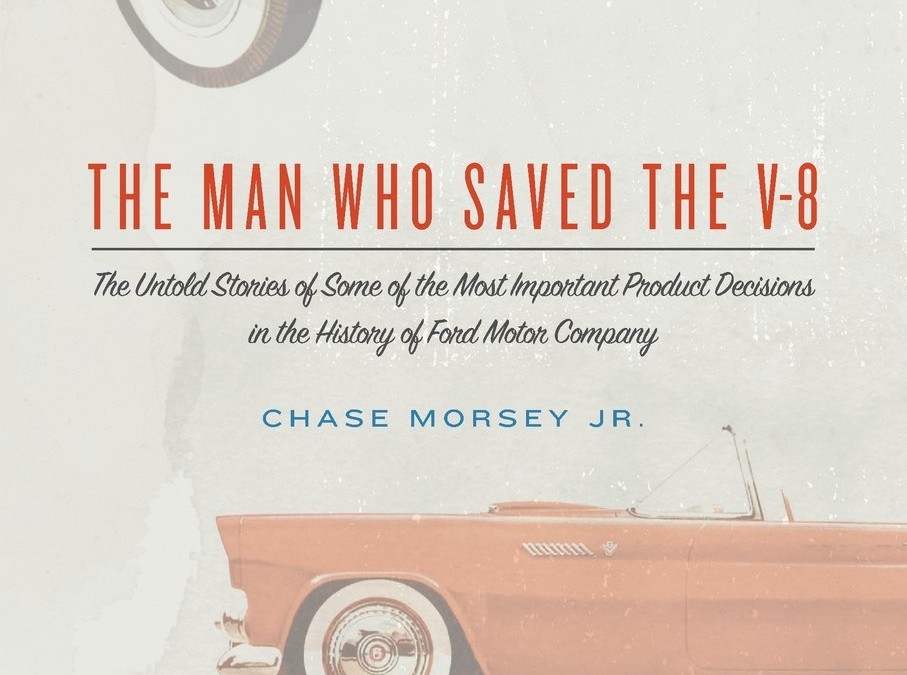
When Chase Morsey Jr. joins Ford Motor Co. in 1948, he has no idea the part he’ll play in automotive history.
Morsey’s arrival comes as Henry Ford II and other titans in the industry are about to kill the vaunted V-8 engine. He sees it as his sole mission to talk them out of it. In The Man Who Saved the V-8, he shares the never-before-told story of how his crusade saved the engine that would go on to power iconic cars like the Ford Thunderbird and Mustang.
“To this day, I have no idea how a young, newly hired manager like myself…had the nerve to challenge the most powerful men inside Ford Motor Company and tell them they were wrong,” Morsey says. “But that is exactly what I did.”
The twenty-nine-year-old executive embarks on massive market research. He works with manufacturing experts to find ways to produce the V-8 engine more efficiently. After finding success, he goes on to continue playing a central role in some of the most pivotal decisions that would ensure Ford remains one of the powerhouses in the automotive industry. The Man Who Saved the V-8 tells the story of his successes and lessons learned.

Indian Motorcycle(R): America’s First Motorcycle Company(tm) tells the complete story of Indian, America’s first mass-produced motorcycle maker, from its start as a bicycle manufacturer to the purchase of the brand by Polaris Industries in 2011 and the subsequent new Indian motorcycles. In the early years of the 20th century, Indian dominated the world’s racetracks, earning the brand a worldwide reputation for quality, performance, reliability, and technical innovation, but the once-mighty company fell on hard times and in 1953 was forced to file bankruptcy.
The Indian brand never quite died, though, thanks in large part to fanatically devoted enthusiasts, who tried to resurrect it for over half a century. Finally Polaris, maker of the highly regarded Victory(R) brand of motorcycles, purchased the brand and released the Chief(R) and Scout(R), models that once again restored Indian to its rightful place in the motorcycle pantheon.

















